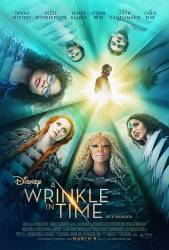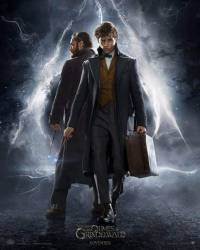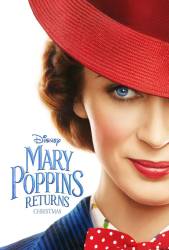
Question: Why didn't Mrs Whatsit turn into a winged centaur as she did in the book? What made them alter the magic creature into a living leaf?
Answer: The biggest critical complaint about this film is that director Ava DuVernay and her screenwriters essentially gutted Madeleine L'Engle's award-winning children's book and turned it into nothing more than Disneyesque eye candy, discarding many important elements of L'Engle's story and arbitrarily refitting it with lightweight (and boring) motivational platitudes. In other words, DuVernay made the movie her soapbox for "social messaging" and tossed out much of the wondrous (and even miraculous) detail that made L'Engle's original book a huge success. Consequently, this movie was a colossal financial failure.
Interestingly, Disney had adapted this story for the screen before (in 2004), and the earlier version did include the flying centaur (albeit a bad CGI rendering). Unfortunately, the 2004 version was also a box-office failure for Disney, and for the same reason as the 2018 remake: Disney removed the magical and spiritual qualities that gave L'Engle's original story its depth.
Disney's previous adaptation was released in 2003 as a TV movie, so it wasn't a "box-office failure", it was just a terrible movie.

Question: Newt and Tina visit the records room located at the French Ministry of Magic. As soon as they meet with Leta who came to see her family tree, the worker at the records room suddenly walks over to them with Matagots and attempts to attack them, including Leta. Why?

Question: P.L. Travers hated Disney's film adaptation of Mary Poppins so much that she refused to have Disney make any more adaptations of Mary Poppins. How could a sequel be made without the consent of Travers, especially since she died in 1996?
Answer: Travers was never entirely opposed to having a sequel made. She initially refused Disney's sequel ideas, and attempted to impose her own demands and concept on what any additional film would be. In the 1980s, Travers and a friend wrote their own screenplay. The Disney company, now with different management, considered it but eventually dropped the project amid casting problems and other issues and conflicts that emerged. After Travers' death, Disney could then negotiate directly with Travers' estate.
Answer: The short answer is *because* she died. Control then passed to her beneficiaries/estate. She didn't forbid Disney from making a sequel, and she couldn't legally prevent it either. The deal she had with Disney just meant that they had to agree on it as she had creative control, and despite their (and apparently her) best efforts, they could never find a sequel idea everyone was happy with, especially given her dislike of the original film. Her will stated: "Any payments received by my Trustees in respect of or any future commercial production or exploitation in any form whatsoever of any books I have written (including any sequel to the film "Mary Poppins") shall be held by my Trustees upon trust to distribute..." On her death creative control passed to her trustees, in terms of sequels and the stage show, and they managed to agree on a sequel idea.
Answer: Like any other such change from the source material, it's just artistic license.
wizard_of_gore ★